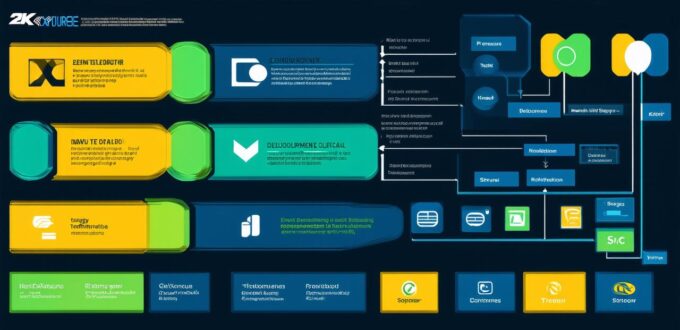Software is an essential component of modern life, and it is used by individuals and organizations alike to perform a wide range of tasks. However, what exactly is included in computer software? This article aims to provide a comprehensive overview of the various elements that make up software, as well as how these elements interact with one another to create functional programs.
Types of Computer Software
There are several different types of computer software, each with its own unique characteristics and functions. The most common types of software include:
- Operating systems: An operating system is the foundation upon which all other software runs. It provides a way for applications to interact with the hardware of the computer, as well as managing resources and providing basic services such as file management and network connectivity.
- Productivity software: Productivity software is designed to help users create, edit, and manipulate documents, spreadsheets, presentations, and other types of digital content. Examples of productivity software include Microsoft Word, Excel, PowerPoint, and Photoshop.
- Application software: Application software is designed for specific tasks, such as word processing, graphic design, or gaming. Examples of application software include Google Chrome, Adobe Acrobat, and Minecraft.
- System software: System software provides additional functionality to the operating system, such as drivers, utilities, and firmware.
- Multimedia software: Multimedia software is designed for creating, editing, and sharing digital content such as music, videos, and images. Examples of multimedia software include iTunes, Adobe Premiere Pro, and Final Cut Pro X.
Components of Computer Software
Regardless of the type of software, there are certain components that are common to all programs. These components include:
- Code: The code is the written instructions that make up the program. It is written in a programming language such as Java, Python, or C++ and provides the instructions for how the program should behave.
- Data: Data is the information that the program uses to function. This includes variables, constants, and other types of data structures.
- User interface: The user interface (UI) is the way in which the user interacts with the program. It can be graphical or text-based and provides a way for users to input data and receive output from the program.
- Algorithms: An algorithm is a set of instructions that are used to solve a specific problem or perform a specific task. Algorithms are often used in programming to automate complex processes.
- Documentation: Documentation is an important component of software development, as it provides information about how the program works and how it should be used. It can include user manuals, API documentation, and other types of technical documentation.

Optimizing Software Performance
In order to create software that performs optimally, developers must consider a number of factors. These include:
- Hardware requirements: The hardware requirements of the software must be carefully considered in order to ensure that it will run smoothly on the target platform.
- Code optimization: Code optimization involves identifying areas of the program where performance can be improved and making changes to the code to improve its efficiency.
- Memory management: Proper memory management is essential for ensuring that the software does not use more memory than necessary, which can cause it to slow down or crash.
- User experience: The user experience (UX) of the software is critical to its success, as users will only continue to use a program if they find it easy and enjoyable to use.
- Testing: Thorough testing of the software is essential for identifying and fixing bugs and other issues that can affect performance.
Case Studies in Software Development
There are many examples of successful software development projects, each with their own unique story. Here are a few case studies that illustrate the importance of understanding what is included in computer software:
1. Google Chrome: Google Chrome is one of the most popular web browsers in the world, with over 60% of the global market share. The success of Chrome can be attributed to its speed, stability, and security, as well as its user-friendly interface.
